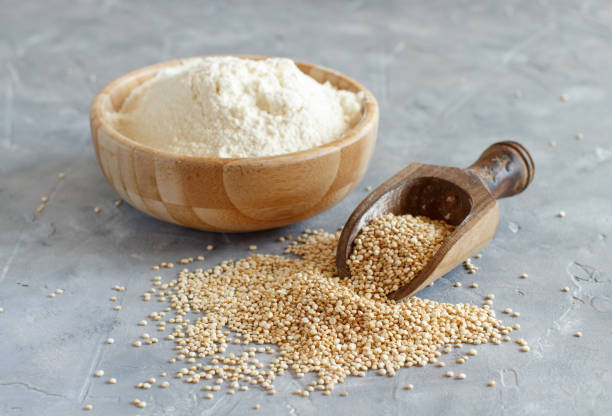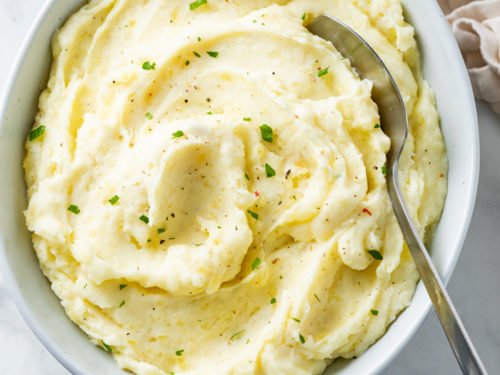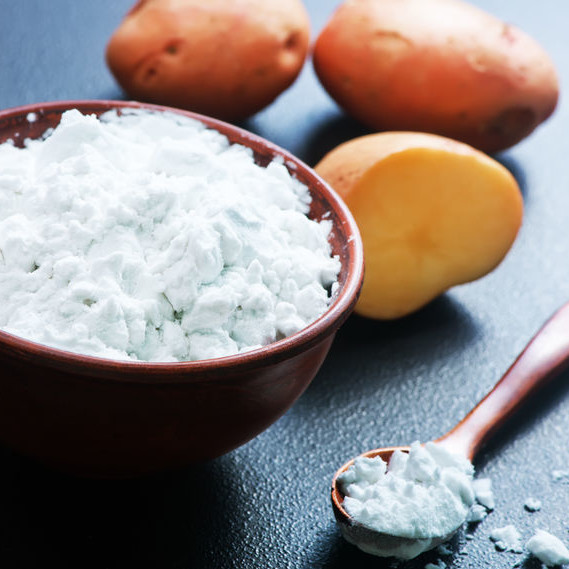Substitutes for Potato Flour: 6 Best Alternatives + FAQs!

Potatoes are versatile vegetables that you may use in a variety of cuisines. They are the most prevalent potato type and are consumed throughout the world. They come in various forms and sizes, with french fries being the most popular potato side dish.
On the other hand, potatoes aren’t just for chips, mashed potatoes, or baked goods; you may also use them to manufacture flour. It’s widely utilized, and you may use the flour in various dishes. It’s easy to make at home and maybe thickening in various recipes.
But, what if you don’t have it or can’t create it at home? Are there any alternatives? Cornstarch, tapioca flour, arrowroot, rice flour, quinoa flour, and mashed potatoes are the most satisfactory potato flour replacements. Additionally, read the instructions on manufacturing homemade flour and how you may substitute potato flour in Chinese cooking.
Potato Flour Substitutes
I’ll share some of the best potato flour substitutions with you further down. I’ll also separate the substitutions into three categories: thickeners, general baking, and bread baking, based on what you’ll need them for.
You’ll need equal amounts of these replacements to replace the potato flour as a thickener:
-
Cornflour

Cornstarch is the flour you use if you’re following a gluten-free diet. It’s a carbohydrate derived from corn’s endosperm. Many people use it as a flour substitute in their cooking.
When should you utilize it?
You may use it to thicken marinades, glazes, sauces, pies, and a variety of other delicacies. It’s a decent alternative, and it emphasizes the texture’s thickness.
-
Tapioca Flour
Another gluten-free flour that is rather popular for baking is Tapioca flour. This is the flour that will improve the texture of the baked foods. This flour aids in the binding of gluten-free recipes and improves the texture. When baking, it’s an excellent substitute for regular wheat flour.
When should you utilize it?
Sauces, pies, and soups may be made using it. It’s an excellent alternative because it has no flavor or odor and never discolors the components.
-
Arrowroot powder

One of the most common gluten-free goods that you can find in practically every kitchen is arrowroot powder. It works well as a thickener, has no flavor, and leaves food looking clear and shiny. It combines well with other flours. When baking, it is used in a 1:1 ratio.
When should you utilize it?
Use it to make pastries, pizzas, desserts like pies, and other similar dishes. In general, for baking.
-
Rice Flour
Raw rice flour is used to make this dish. It’s an excellent option for cakes and cookies. Another noteworthy feature is that it is gluten-free and may create bread.
When should you utilize it?
You may use this flour to create rice noodles pancakes and thicken soups and stews.
-
Quinoa Flour

It’s prepared by crushing quinoa seeds and may be used in several dishes. Unlike other gluten-free flours, quinoa does not require the addition of other gums such as gum or guar gum to adapt it to baking recipes.
When should you utilize it?
To thicken the texture of soups and stews, you can use quinoa flour. It may also be used as a protein powder in smoothies and shakes.
-
Mashed Potatoes

This is the most acceptable alternative for mashed potatoes since it has potatoes in its composition. This will bring out the potato taste and nutrients, giving you a nearly identical texture to potato flour. The only difference is the amount of water in the mashed potatoes, which adds a lot of moisture to your baked items. There is no simple method to determine how much additional water to add to your dough. The extra moisture will not make much difference in specific recipes, but you must not destroy the texture.
Another thing to remember is that if you’re substituting mashed potatoes, you’ll need to lessen the liquid to compensate for the moisture. If you want to bring mashed potatoes and an even better alternative for the potato flour, use a food dehydrator.
When should you utilize it?
Use it in dishes like soups and stews to bring out the texture’s thickness. Also, use potato flour as a thickening in any meal that calls for it.
Substitute for potato flour in Chinese cooking:
Cornstarch is a typical alternative for potato flour in Chinese cooking, as I previously stated. Cornstarch is a necessary component of practically every Chinese meal. It is necessary due to its accessibility and ease. It’s flavorless and one of the essential components with several applications.
You can use cornstarch to:
- To marinate the meats to give them a velvet feel after stir-frying.
- Dredging food with flour before deep frying gives it a good crisp.
- This flour is great for rounding out chewy doughs, noodles, and baked products.
How to make potato flour at home and what to do with it?

Potato flour is a dense flour with a distinct potato taste. It’s composed entirely of potatoes, including the skin. The mixture is then allowed to dry before being crushed into flour. It’s up to you whether you want to eat them raw or cooked. Potato flour has a protein content of 1% and a fiber content of 5.9%. Potato flour and potato starch are frequently mistaken, but they are not the same and cannot be swapped. The flour is made from a whole dehydrated potato, while the starch is made entirely from scratch.
When should you utilize it?
It is not used as the principal flour in baking because it absorbs too much moisture and makes it gummy. So use it in bread and roll baking recipes. It works well when used in tiny amounts and keeps the things you’re cooking together. In gluten-free flour mixes, it works best in modest doses. Use it as an ingredient in potato-based dishes to enhance the flavor’s richness and texture.
Recipe for homemade potato flour: There are two ways to produce homemade potato flour. Potatoes may be utilized both cooked and raw, as I previously stated. So all you’ll need is around 4 kg of potatoes and a dehydrator to make roughly a kilo of flour.
First, make sure they’re well cooked before mashing them with cooked potatoes. Place the potatoes on a dehydrator and dry for 12 hours to almost a day. After they’ve dried, mix them up and keep them in an airtight jar. This procedure takes a long time to complete.
Raw potatoes: Peel them and chop them into thin slices in a bigger pan of boiling water. Then, at the bottom, place the dehydrator for about 12 hours. It’s ready to be kept in containers once crushed or blended.
Related Questions
Is potato starch a healthier alternative to flour?
Potato starch is a healthier alternative to flour because potato scratch includes more calories and carbohydrates, making it a fantastic choice if you want to thicken your dish or add calories or carbs.
What effect does flour have on bread?
This flour provides the bread with a primary wet yeast flavor if you’re baking. The flour helps to enhance the moisture by absorbing it.











